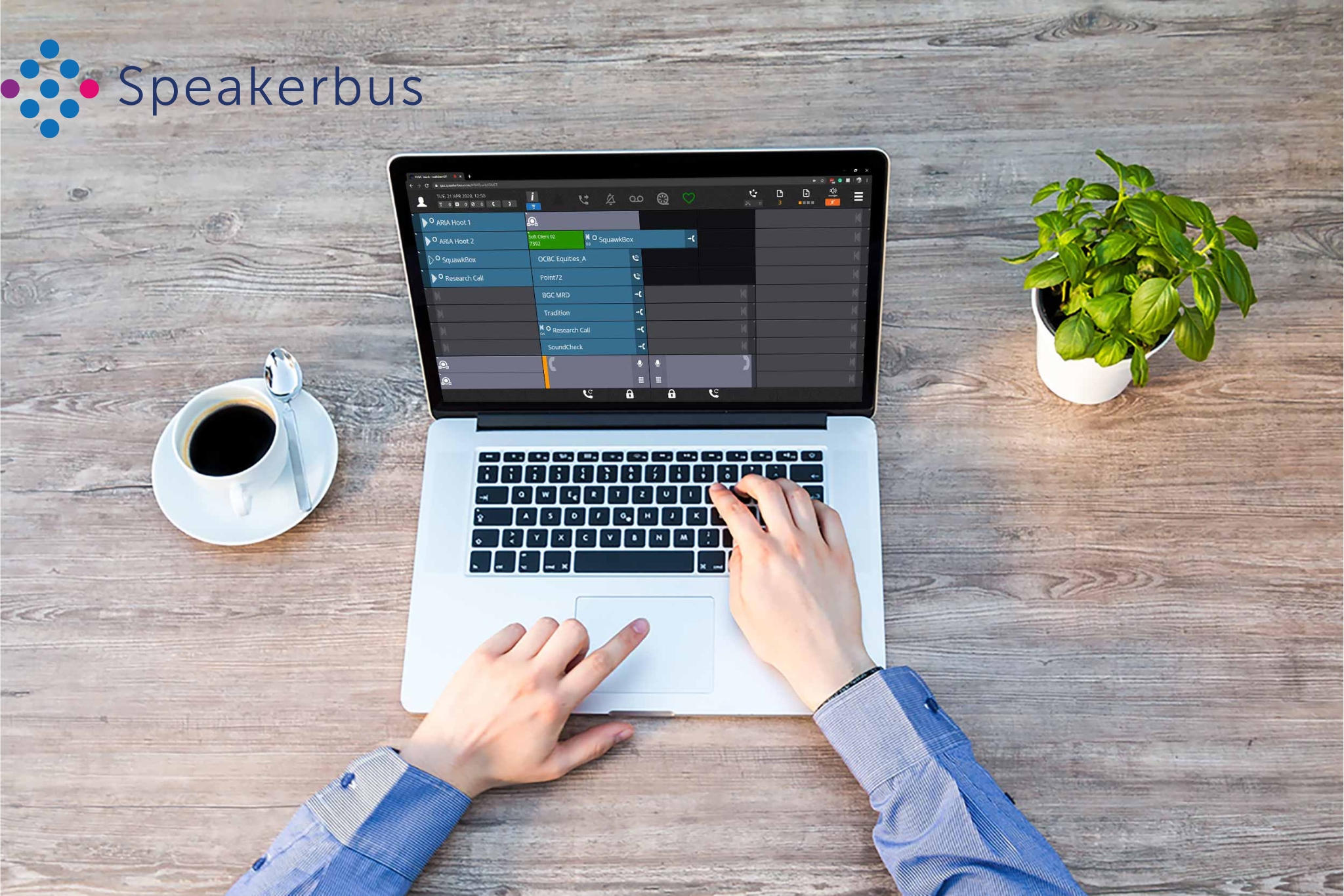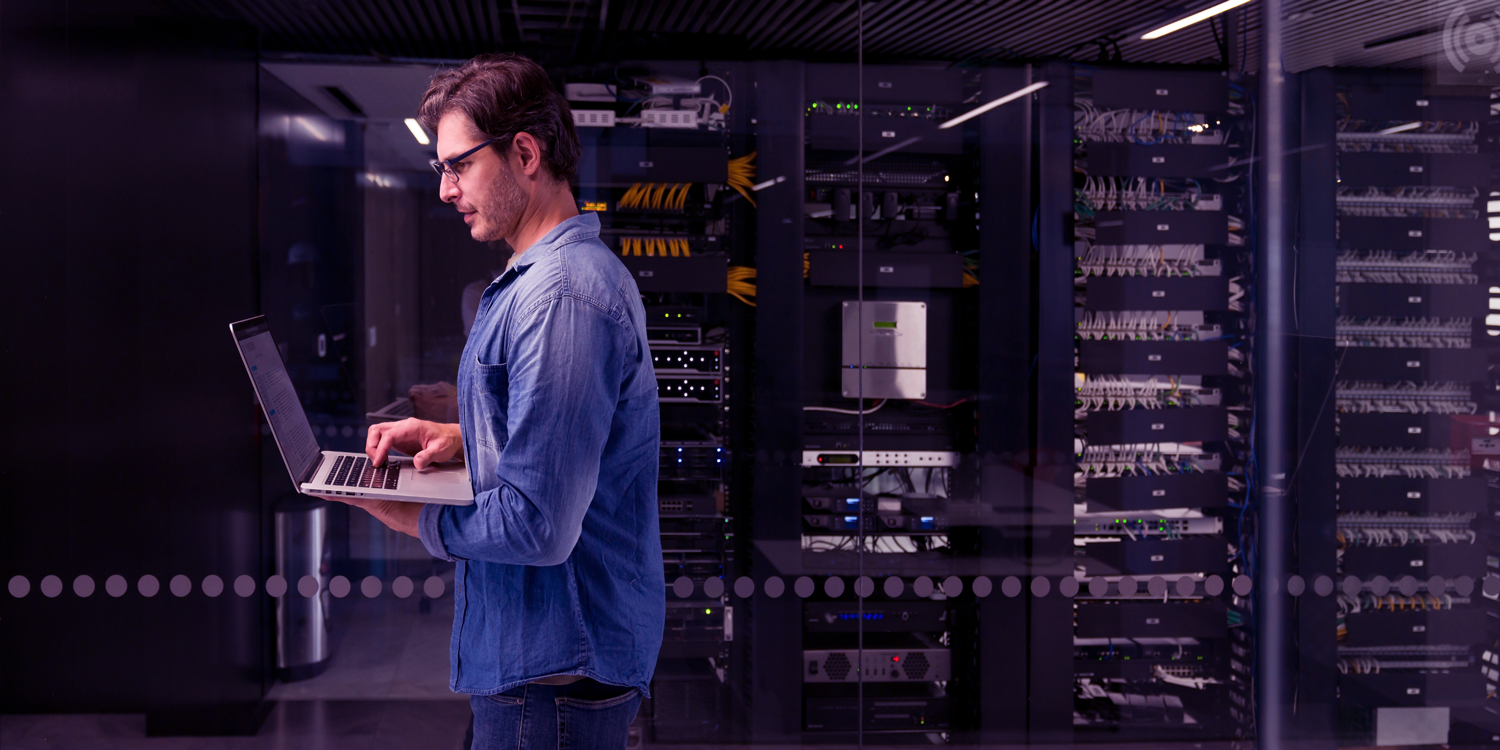
Welcome to the dynamic world of trader voice technology - a cornerstone of trading collaboration in the fast-paced realm of financial markets.
This guide is your gateway to understanding the fundamental concepts, technologies, and terminologies that define the trader voice landscape.
Whether you're a budding trader, a curious investor, or someone entering the finance industry, let's embark on a journey to unravel the essentials of trader voice.
Unveiling Trader Voice
1.1 What is Trader Voice?
Trader Voice refers to the communication system used by financial professionals, mainly brokers or traders, to facilitate real-time communication and execute complex transactions.
Unlike traditional telephone systems, trader voice systems are specifically engineered to meet the unique needs of financial markets, where split-second decisions and clear communication are critical.
1.2 Why the Human Touch in Voice Trading
The human touch in trading remains essential for several reasons despite the increasing reliance on automation and electronic trading platforms.
- Complex Decision-Making: Traders often encounter situations that require nuanced judgment, adaptability, and the ability to factor in qualitative information. As such, voice remains the best way to work to an agreement rather than relying on text or an algorithm.
- Relationship Building: The human touch fosters trust and communication between traders, brokers, and clients. Personal connections can be crucial in negotiations, deal-making, and creating a collaborative environment within the market.
- Risk Management: Effective risk management requires quantitative analysis and qualitative judgment. The human touch and voice are crucial in assessing the broader risk landscape, understanding the potential impact of events, and making decisions that go beyond algorithmic calculations.
- Creativity and Innovation: The human touch brings creativity and innovation to trading. Traders can devise unique strategies, identify opportunities that might not be apparent through data alone, and contribute to developing new financial instruments or approaches.
- Handling Exceptional Situations: The human touch becomes even more critical in exceptional situations or market crises. Traders can provide reassurance, apply judgment in unprecedented circumstances, and make decisions that are not solely based on historical data or algorithms.
While automation and electronic trading have undeniable benefits in speed and efficiency, the human touch complements these technologies by bringing qualities like intuition, emotional intelligence, and adaptability that are crucial in the ever-changing, fast-paced landscape of financial markets.
Technologies Driving Trader Voice
2.1 Analog to Digital: Evolution of Voice Technology
In the early days of trading, analogue voice systems, often synonymous with an open outcry in bustling trading floors, were the primary mode of communication. Traders engaged in direct verbal exchanges, signalling buy and sell orders amid a cacophony of voices.
As technology became available, the financial world transitioned towards more sophisticated and efficient digital systems. Speakerbus saw the opportunity and, in 1984, brought its industry-leading Digital Intercom platform to market. This technical evolution involved adopting digital voice communication technologies over fixed wire systems, paving the way for increased clarity and features.In the 2000s, advancements in Internet technologies (bandwidth, protocols and security) allowed trading floors to fully leverage IP platforms, including Voice over Internet Protocol (VoIP) and Session Initiation Protocol (SIP), which enables instantaneous communication over the Internet.
This transition not only streamlined communication but also laid the foundation for advanced features, such as encrypted channels, integration with other digital tools, and the ability to seamlessly manage multiple lines across different platforms.
At Speakebus, we selected certification with Avaya and Cisco and several leading compliance vendor platforms, growing our ecosystem as well as in releasing our first SIP Dealerboard iTurret.
In 2019, we introduced a Hybrid Touch Trading Hub called AYRE; using our QORUS platform, it can be deployed quickly, replacing legacy platforms, or become an integral part of your existing communication portfolio.
With a growing number of clients now looking to the cloud, it's also available as a subscription-based service that offers next-gen connectivity (CADENCE).
2.2 Voice over Internet Protocol (VoIP) and SIP
VoIP, or Voice over Internet Protocol, is a pivotal technology in facilitating voice communication over the Internet. Its value lies in its ability to transmit voice data digitally, allowing for efficient and real-time communication.
In the late 90's, VoIP technology was improved with the addition of the Session Initiation Protocol (SIP). SIP was originally approved by the Internet Engineering Task Force (IETF) back in 1996 because voice engineers wanted a protocol that could support mobility, interoperability, and growing multimedia needs.
SIP is a signalling protocol for initiating, maintaining, and terminating communication sessions that include voice, video and messaging applications. This allows other media to be included in calls, as well as enhanced security.
SIP works with several other protocols to specify the media format and coding and carry the media once the call is initiated. For call setup, the body of an SIP message contains a Session Description Protocol (SDP).
This data unit specifies the media format, codec and communication protocol. Voice and video media streams are typically carried between the devices using the Real-time Transport Protocol (RTP) or Secure Real-time Transport Protocol (SRTP).
SIP began to experience widespread adoption within collaboration platforms, supporting most voice solutions today, from SIP Trunking to Cloud PBX. The global SIP trunking market is projected to reach US$30.22 billion by 2027, a substantial increase from $13.44 billion in 2019. These projections are based on the growing demand for SIP clients for organisations of all sizes and the increased prevalence of remote users. However, the trading floor have been to adopt SIP.
In the private wire space, SIP is seen as the technology to unseat the older analogue and digital offers, and companies like Speakerbus are rolling out SIP lines today to new clients and users of their Cadence platform.
These clients have recognised the massive benefits, including scalability, redundancy, and costs, however the logistics of the transition and how the market works today are slowing rapid adoption.
SIP technology promotes seamless communication and contributes to trader voice collaboration systems' overall efficiency and adaptability, removing the island nature of legacy trader voice and supporting the dynamic landscape of financial markets.
2.3 Cloud Services for Voice Trading
Cloud services play an increasingly vital role in trader voice communication, providing flexibility, scalability, and advanced features that enhance collaboration and connectivity within the financial industry.
For example, the Speakerbus Cadence SaaS platform offers the same on-premise solution via various cloud providers, such as Google Cloud Platform, Microsoft Azure, or Amazon. Cadence also provides access to a full range of next-generation and legacy voice services for Inter-Firm communications, including private wires, hoot & holler, and intercom services.
Key Components of Trader Voice Systems
A typical trader using voice will use a device that looks like a desktop speaker or a larger device similar to a phone switchboard called a Dealerboard or Turret. In addition to telephony, they will also use specialist call types, such as Private Wires, Intercom and Hoots.
3.1 Trading Turrets or Dealerboards
These specialised communication devices provide a range of features designed to enhance communication efficiency and support the fast-paced nature of trading activities.
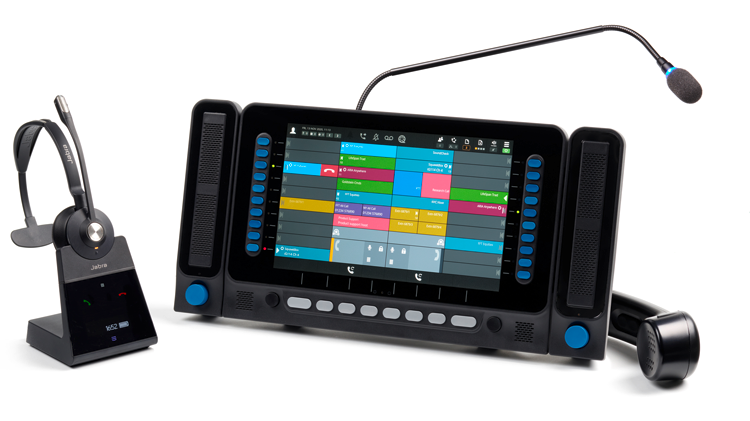
The following points highlight the benefits of these dedicated communication devices.
- Real-Time Communication: Turrets offer real-time communication capabilities, allowing traders to connect instantly with colleagues, clients, and other market participants. In voice trading, where split-second decisions can be critical, communicating without delay is essential.
- Multi-Channel Communication: Trading turrets support multiple communication channels, including voice calls, Intercom, and Hoots. Traders can seamlessly switch between these channels to adapt to the specific communication needs of different situations.
- Collaboration Features: Collaboration is key in trading environments. Dealerboards provide features that facilitate collaboration among traders, analysts, and other stakeholders. This includes features like shared lines, conference calls, and intercom functionality.
- Choice: Traders can access both soft and hard trading turrets. These devices fit the needs of the trader's environment or personal workflows, offering access to the same contacts, button layout and seamless compliance integration - whichever device they use, in any location
- Market News: Many Turrets integrate with news feeds, enabling traders to access up-to-the-minute information and stay informed about market developments. This integration helps traders make informed decisions based on the latest data and news.
- Security and Compliance: Trading Turrets integrate with compliance vendors to ensure an immutable record of communication always exists. Compliance prerequisites are legal requirements in the financial industry, and these systems provide features such as call recording, trade reconstruction, and monitoring to meet these standards.
- Customisable Functionality: Traders often have specific requirements for their communication systems. Turrets are highly customisable, allowing traders to configure their personal profiles according to their workflow, preferences, and the particular needs of their trading activities, be they in the front, middle or back office.
- Speed and Efficiency: Turret designs are optimised for speed and efficiency. Traders can plan complex trades, communicate with team members, and quickly access real-time information without switching between tools or platforms.
- Redundancy and Reliability: In trading, downtime can result in significant financial losses. Turrets are designed with redundancy and reliability features to minimise the risk of disruptions. These systems have backup solutions and failover mechanisms to ensure continuous operation.
- Centralised Control: Trader communication systems offer centralised control, allowing supervisors or administrators to manage and monitor communication activities. This centralised control is essential for compliance monitoring, risk management, and ensuring that communication aligns with organisational policies.
3.3 Speakers
Like a trading turret, Speakers offer instant access to market news, internal teams, and external counterparties. The main difference is that a Trading Speaker has no telephony call types; these devices are more focused with fewer call types, typically private wires, hoots and intercom and take up a smaller desktop footprint.
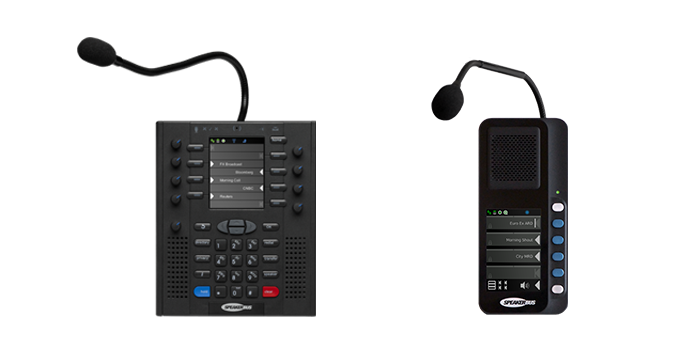 The following points highlight the benefits of these dedicated communication devices.
The following points highlight the benefits of these dedicated communication devices.
- Collaboration in Shared Spaces: On trading floors or collaborative trading environments, traders use speakers to broadcast information to colleagues and counterparties. Traders rely on Speakers to disseminate market updates, news, or announcements to a broader audience within the trading workflow.
- Monitoring Multiple Streams: Traders must monitor multiple information sources simultaneously, including market data feeds, news, and communication channels. Using speakers can provide an audible alert for essential updates, allowing traders to stay informed without relying on constantly monitoring multiple windows.
- Extending Conference Calls and Morning Meetings: Traders engage in conference calls and meetings for strategy discussions, market analysis, and decision-making. Speakers can be used to ensure that everyone can hear the conversation from any location.
- Alerts and Team Notifications: Traders may use speakers to receive audible shouts or notifications for specific events, such as price movements, macro/microeconomic changes, or system updates. Auditory cues can be an additional layer of awareness, especially in fast-paced trading environments.
- Hands-Free Communication: Speakers allow traders to participate in calls or discussions without the need to wear a headset continuously. While not as common as headsets, some traders prefer using speakers for hands-free communication using headsets for specific tasks.
- Environmental Awareness: In some trading environments, traders must maintain awareness of their surroundings. Using speakers can allow them to stay connected to market updates and communication channels while remaining attentive to the ambient noise and activities in the trading room.
3.4 Private Lines, Private Wire and Direct Lines
In the voice trading market communication between interdealer brokers, banks and the buy-side, leased lines and point-to-point private wires are used to connect counterparties; the terms given to these lines are Private Lines, Private Wires or Direct Lines, but they all describe the same function.
This trading function enables constant communication between parties, ensuring consistent and ongoing revenue for assets traded Over-the-Counter (OTC) or off-exchange trading.
Trading Financial Technology (Fintech) has progressed. However, Private Wire infrastructure for voice trading has largely been left behind in terms of modernisation. Despite advances in electronic trading, most voice-based trading still runs on traditional technologies such as time-division multiplexing (TDM) lines. These lines rely heavily on specialised, location-bound hardware interfaces and gateways.
Traditionally, Brokers were largely office-based and desk-bound, so there was not too much of a motivation to move their private lines to the cloud. COVID-19 changed all that, driving the need for more flexible solutions based on modern protocols for voice brokerage.
In particular, work from home has spurred a move away from fixed point-to-point circuits and towards SIP infrastructure. Post-pandemic, the rise of hybrid work has continued to drive demand for cloud-based solutions.
From a cost and revenue perspective, migrating away from TDM and bringing private wires to a cloud environment with a specialist Trader Voice and Cloud provider can introduce cost savings.
Instead of paying a fixed cost per line, you move to a consumption model, and only pay for data egress and connections on the data necessary for the voice transit. It’s quite complex to assess and build out these solutions and every client has their own specific network requirements and planning required for their migration.
Terminologies in Trader Voice
4.1 Squawk / Speaker / Hoot box
A Squawk/Speaker/Hoot box, also known as "hoot-n-hollers", is a specialist term for a device with a speaker that a brokerage firm's analysts or traders use on trading floors or desks. Squawk boxes can be found in investment banks, brokerages, and exchange floors. A squawk box allows a firm's analysts and traders to communicate with the firm's brokers.
While many other forms of communication have emerged as a result of technology, the squawk box is still often a requisite in many investment banks and brokerages.
Depending on the trader’s workflow and preference, they no longer have to be physical boxes; traders can choose to use soft-based devices for electronic collaboration and notifications.
4.2 Hoots - Shout Down or Junkyard Circuit
These terms are used to describe the specialist calls made over the Squawk box or a Trading Turret. It describes where there is a permanent open circuit between two or more parties. Any user can speak at any time and be heard over the system immediately - there is no need to pick up a phone, press a button or perform any other separate function. It's ideal in fast-paced trading like brokerage.
4.3 Intercom
Intercom facilitates quick and efficient communication within trading floors, helping traders coordinate their activities, share information, and make time-sensitive decisions. Like a phone, each user is issued an Intercom number, they are hands-free, auto-answer and can support calls between 2 or more users. Intercom platforms can also be delivered as hard or soft variants.
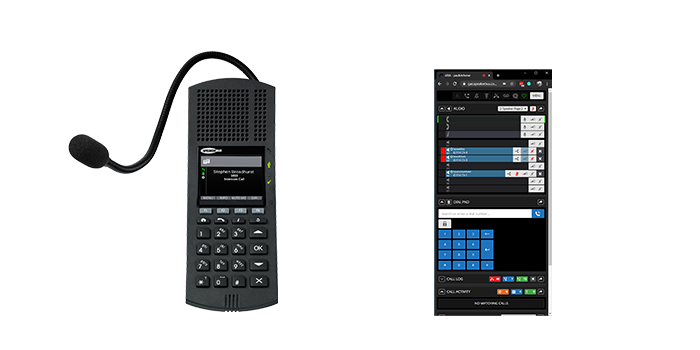
4.4 Types of Private Wires - Manual Ring Down (MRD) / Automatic Ring Down (ARD)
Direct connections come in two with different configurations, which work slightly differently.
Manual Ring Down (MRD) dials the counterparty, but then only rings the far end when the initiator triggers the ringing by pressing the corresponding key. The Automatic Ring Down (ARD) option removes the manual alerting, and instead begins alerting the far end as soon as the trader presses the corresponding private wire key.
4.5 Shared Lines, Line Hunting and Busy Lamp Field (BLF)
Trader workflows rely on fast access to the market and their counterparties. Shared lines allow (with the correct permissions) traders to use and access telephony lines as a team. In practice, a sales line might be shared with the whole team, allowing any team member to answer the line. Line hunting works by moving calls automatically between team members; when clients ring the trading team, the system will route the call to a group of members so they can answer the call.
Finally, the Busy Lamp Field allows team members to see the team's real-time availability. Turret users will also be able to see multiple extension statuses. Seeing this enables the team to decide whether to transfer new callers, put them on hold, select the best available team member.
Regulatory Landscape and Compliance
5.1 Regulatory Frameworks
The regulatory frameworks governing trader voice communication are crucial for maintaining transparency, integrity, and fair practices within financial markets. These frameworks vary across jurisdictions and are designed to address specific concerns related to trader communication.
The three most widely followed are Market Abuse Regulation (MAR) and MiFID II (Markets in Financial Instruments Directive II) for the European Union and Dodd-Frank Wall Street Reform and Consumer Protection Act in the USA.
The key responsibilities for firms are:
- The recording and retention of trader voice communications. This includes phone conversations and other electronic communications related to trading activities.
- Trading firms are required to store recordings for a specified period, making them accessible for regulatory audits, trade reconstruction and investigations.
- Regulatory frameworks often require financial institutions to implement robust communications surveillance systems to monitor trader activities for potential market abuse, insider trading, or other illicit practices.
In addition to these specific financial frameworks in the EU firms face large fines if they breach data protection and privacy laws. For example, firms must obtain consent to record personal data under GDPR (General Data Protection Regulation).
Conclusion
Congratulations! You've completed Trader Voice 101, gaining a foundational understanding of the key concepts and technologies that drive communication in the world of finance. Armed with this knowledge, you're better equipped to navigate the complexities of trader voice and appreciate its crucial role in the global financial ecosystem.
Stay tuned for deeper dives into advanced topics as you continue your journey in the exciting realm of trader voice technology.

